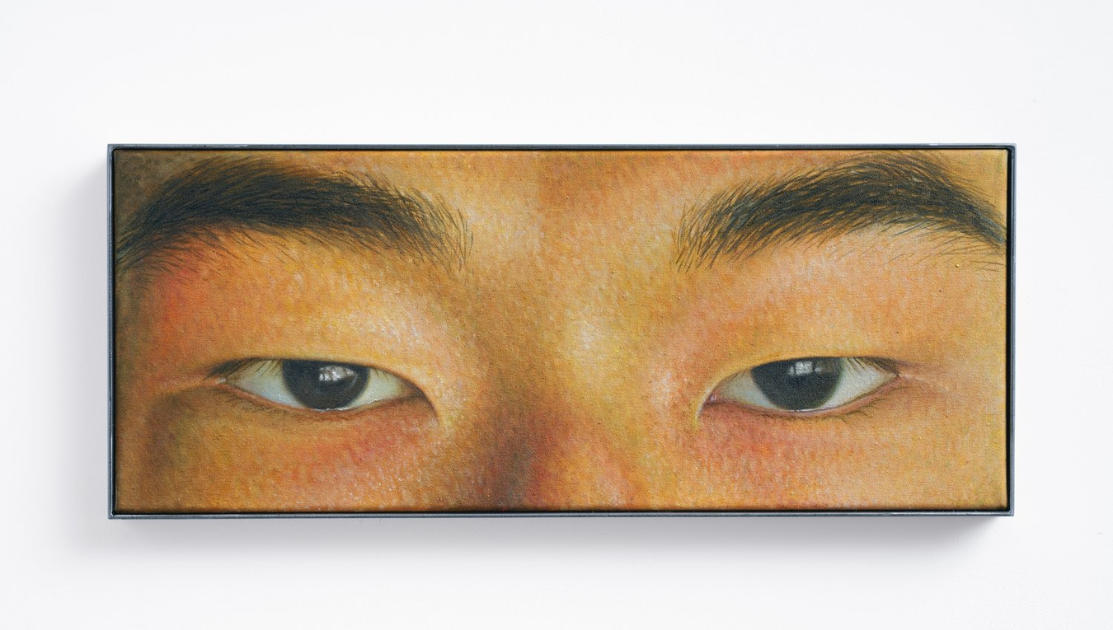
Sang Woo Kim's cacophony of detailed self-portraits position his eyes as his artistic motif, putting cultural identity, both self-assessed and externally enforced, at the centre of his work.
Reconciling his identity as a Korean man residing in the imperial metropole, disrupting the expectations of imperial, orientalist thought that have pervaded British history and our relationship with the colonies and the rest, Sang Woo Kim makes us look deep into his eyes, rounded by imperfect strokes and grainy splotchings, so we interrogate his own interrogation of his self image.
His epicanthic folds, a feature of Asian physiognomy that has been derided by the West which has been used to categorise and otherise the East, hold full focus in The Sear, The Seen. It may test our liberal sensibilities to even talk about or consider how his face may or may not be different from ours. It looks like he's casting his gaze upon us, but upon much closer inspection, his eyes point to somewhere to the side, behind us, through us, and we become both seen and unseen. Considering ourselves in relation to him, as he considers himself in relation to us. It is Kim in fact reclaiming agency over his own appearance, defining his own phenotypes in defiance to the Orientalist that has defined his.
The sheer number of self-portraits point to a myriadic complexity of his self-concept, to the constant process of self-questioning and self-discovery, as a man from a country so rigorously colonised, so subjected, now living in the chief colonising and subjecting country of the modern era. There are more questions that answers about what we must do to resolve these conflicts of definition, and Sang Woo Kim asks the right questions.